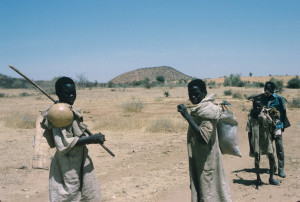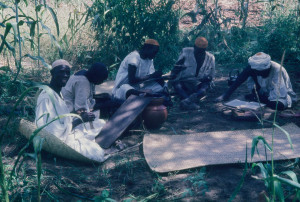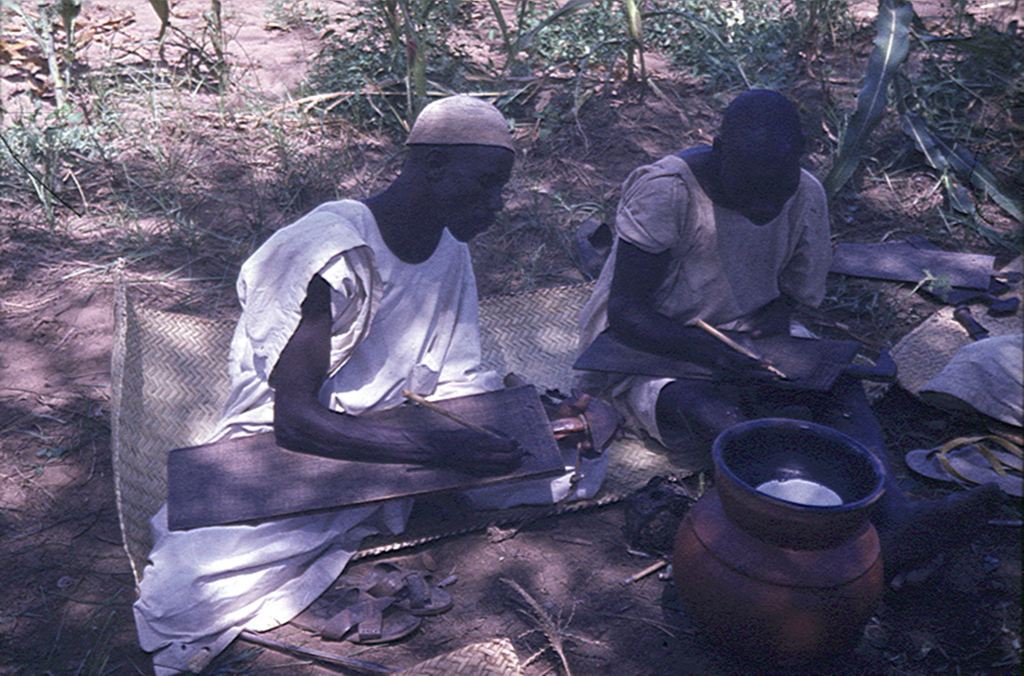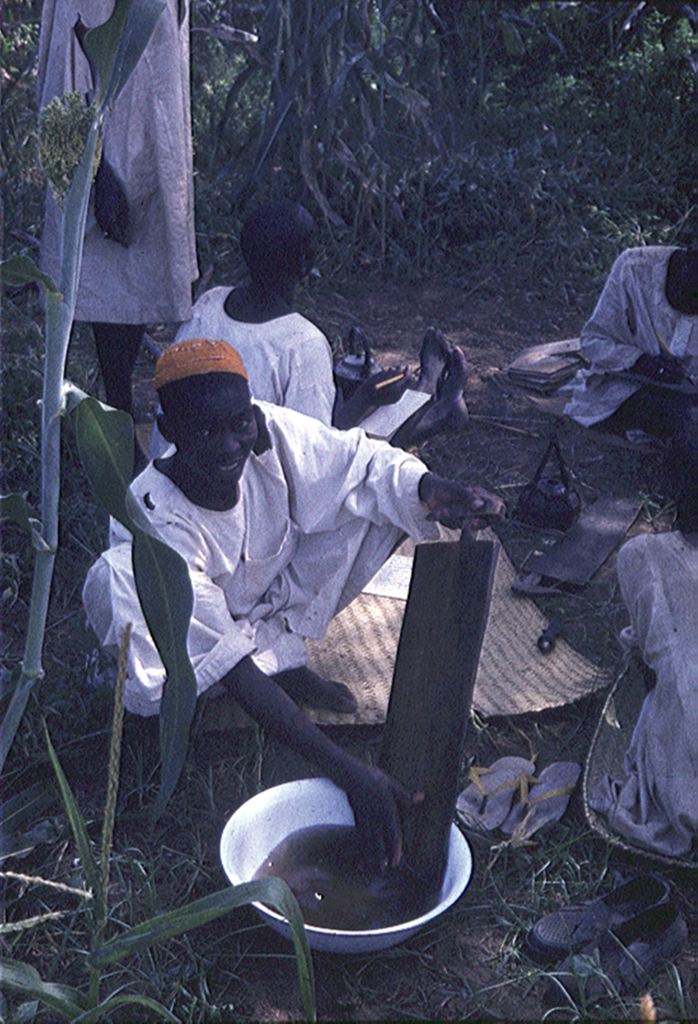Fur boys who do not go to government schools will for periods of 4 to 6 years attend Koran schools (Fur: “som”) where they are instructed by local faqihs (Arabic for “holy men”) teaching them to write verses from the Koran. During this period they generally attend schools led by different faqihs, involving movements over areas covering large parts of Darfur. These Koran school boys (Arabic and Fur: “Muhagerin”) are on the way to a new faqih in a different village. During the studies they subsist on alms given by the people of the villages where they study. Note the wooden board (Arabic and Fur: “loh”) that the boy to the left is carrying on his shoulder. It is on this board they are trained to write Koranic verses by locally produced ink (Fur: “dawai”, Arabic: “hibr”).
Northern Darfur.
Photo: Gunnar Haaland, 1969



